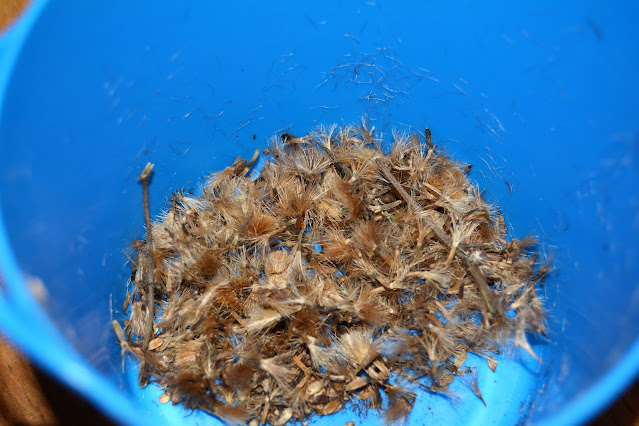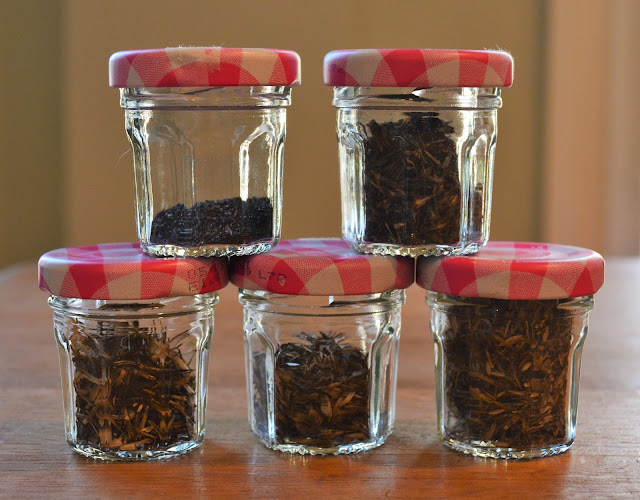Saving Seeds
January is the quietest month in our garden and a time I use to evaluate our landscape and consider how to incorporate more native plants and wildflowers in our garden beds and meadows. As much as I appreciate the work of birds and other critters spreading seeds on our property, there is a form of organized chaos to our landscape design.
 |
| eastern silver aster (Symphyotrichum concolor) |
Harvesting seeds from native wildflowers is a good way to grow more plants that can be used in other areas of our garden. Recently, on a dry, sunny day, I walked around our property to collect seeds. With brown paper bags and a marker in hand, I gathered seeds using two different methods.
 |
| Narrow leaf mountain mint (Pycnanthemum tenuifolium) |
Seeds in plants like mountain mint are housed in seed heads and are teeny tiny. I find the best way to save them is to put a brown paper bag over the seed heads and gently shake the flowers allowing the seeds to fall into the bag.
 |
| Georgia aster (Symphyotrichum georgianum) |
 |
Seeds should be well dried before storing so they don't mold. For short term storage, paper envelopes work well. For longer term storage, I prefer to use glass jars. The mini jam jars from our Bonne Maman advent calendar are a perfect size. Don't forget to label your storage jars/envelopes with name of plant and date of harvest.
Tip: Throw a silica gel pack in your jar for a few days to absorb any residual moisture. But don't leave it in longer because they will dry the seeds too much.
Are you saving seeds from your garden? The last Saturday of every January is National Seed Swap day. I encourage you to share open pollinated seeds from your garden with other gardeners, neighbors and friends or donate them to a local seed library to spread the love. This is a great tradition and wonderful way to get someone started growing native plants, support pollinators or create a wildlife sanctuary.

.png)
